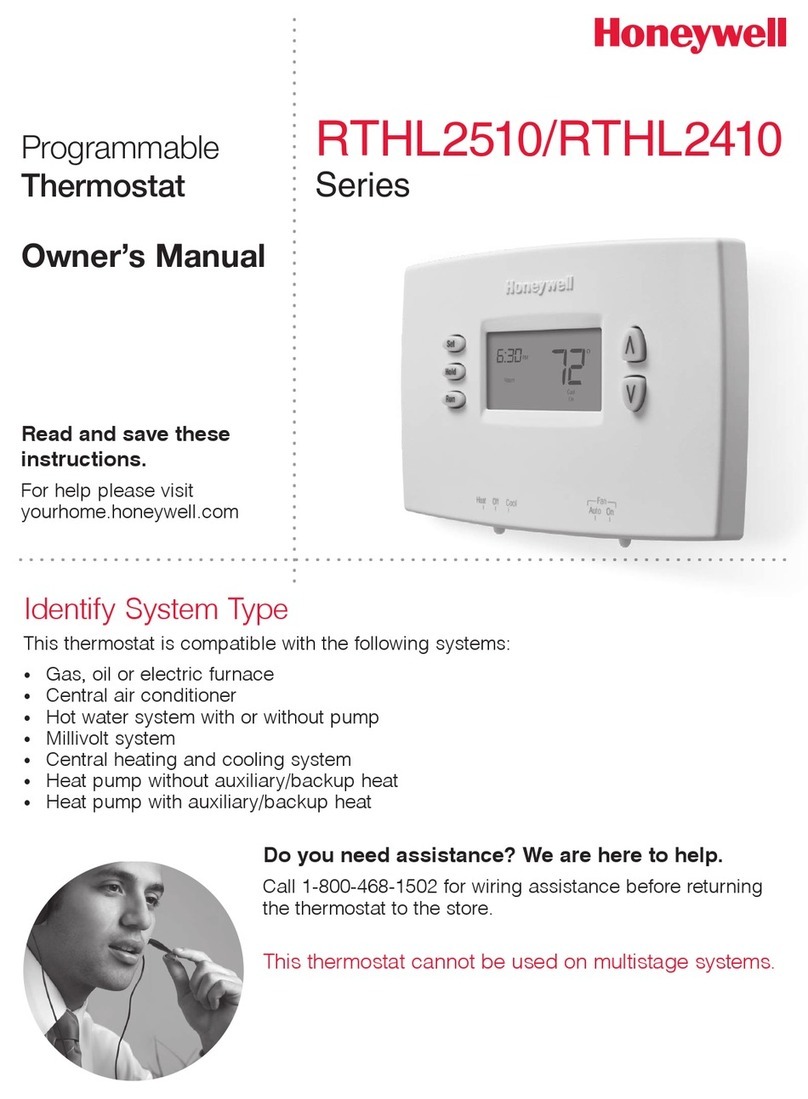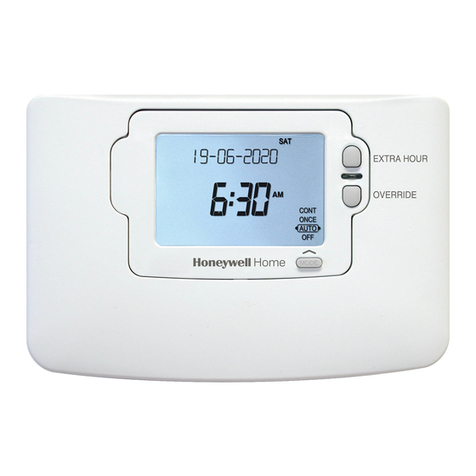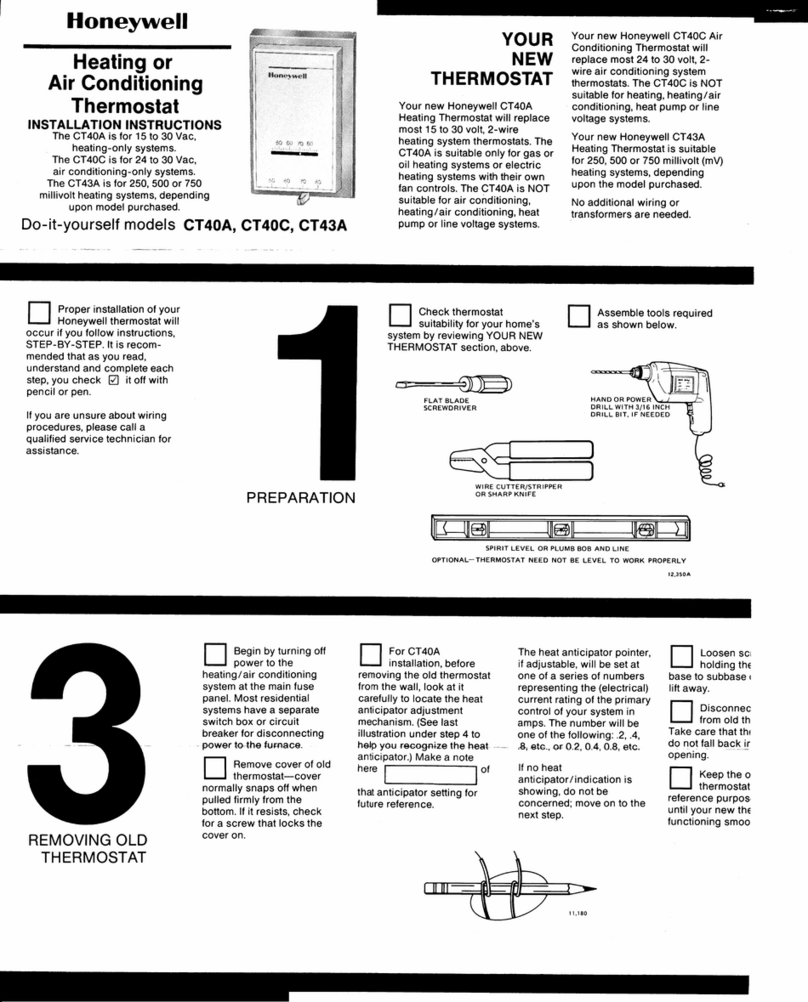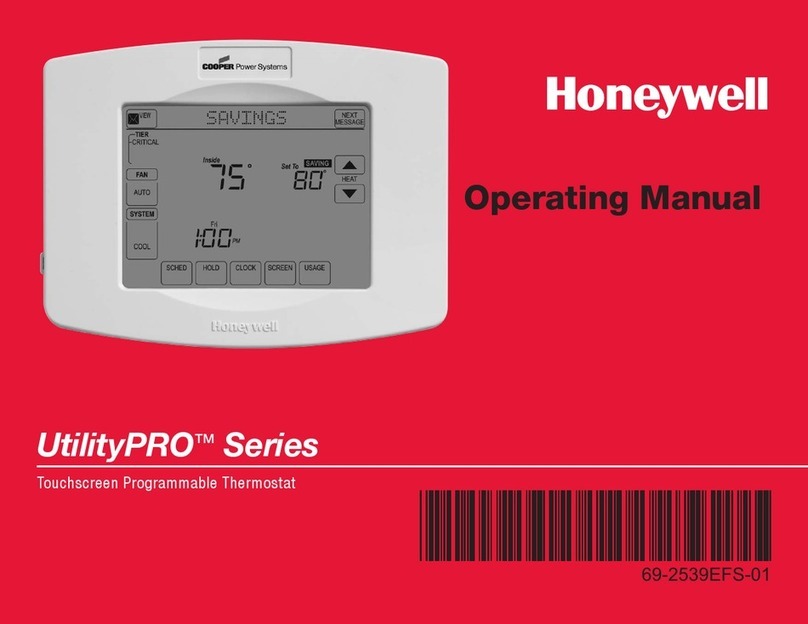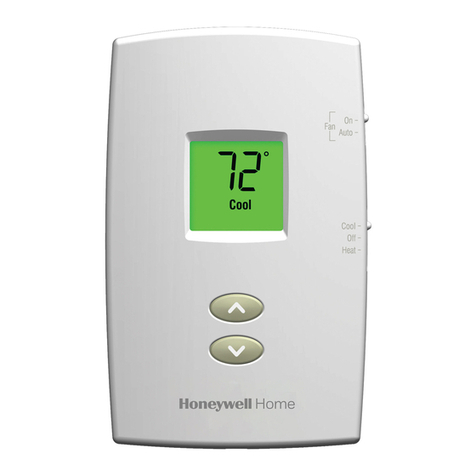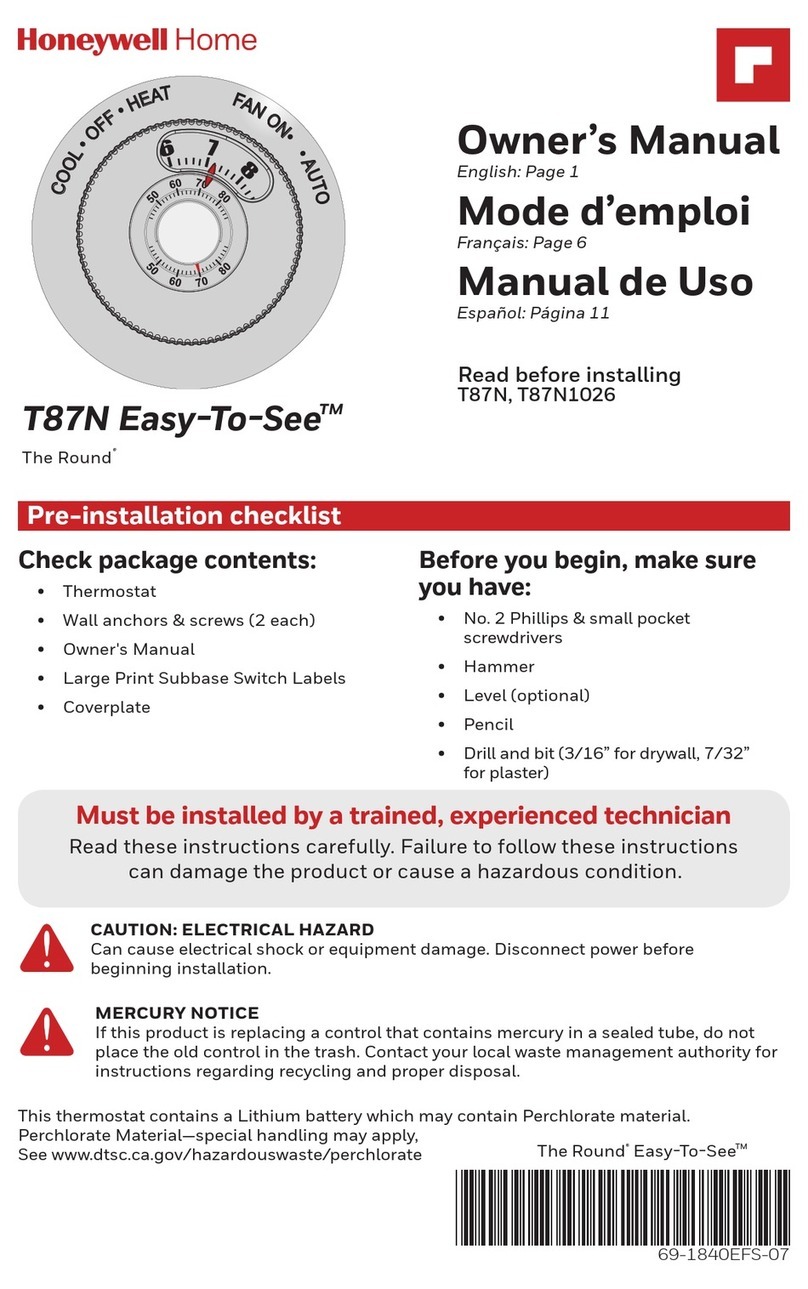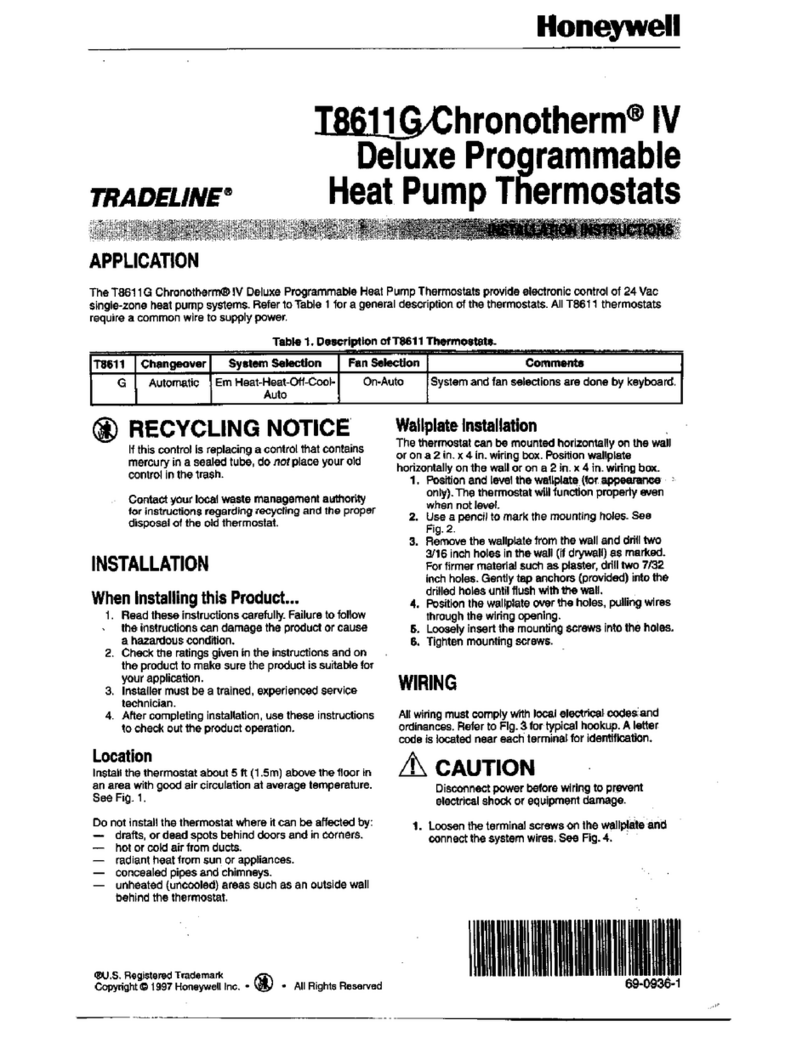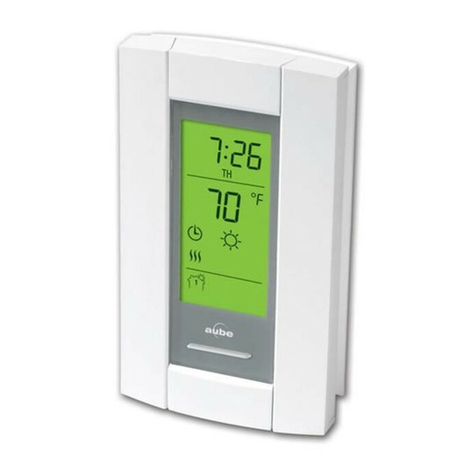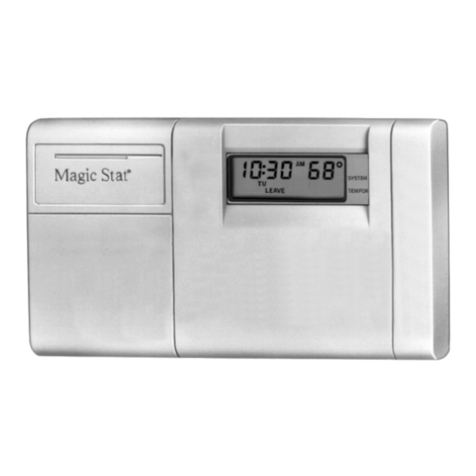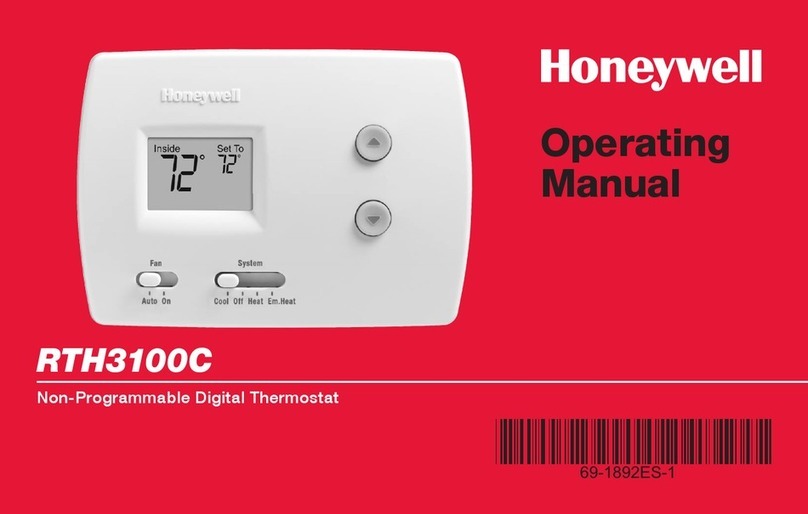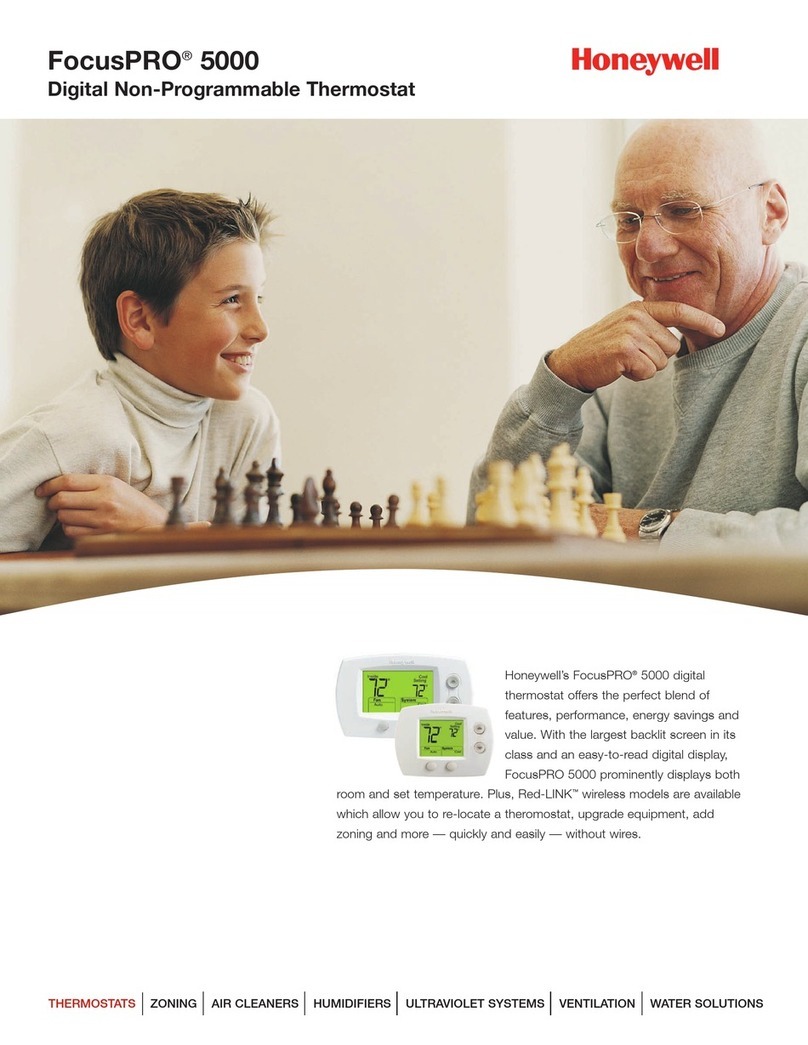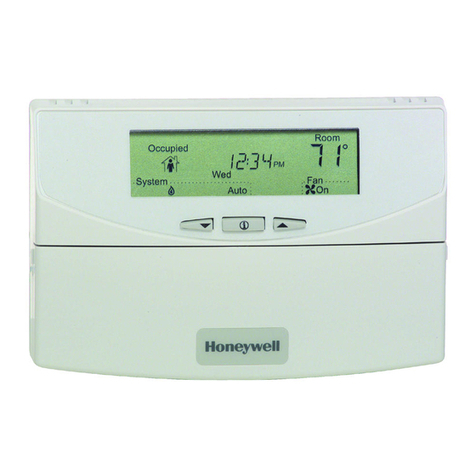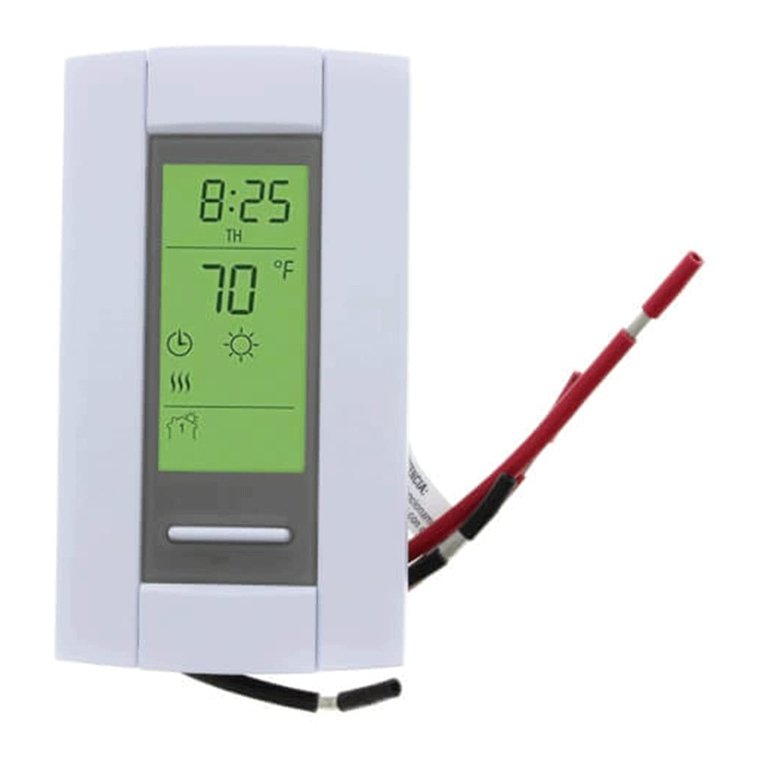
760-1227—1
Fig. 12—Restricted set point.
MOUNTING THE THERMOSTAT
1. Remove the thermostat cover by pulling the bottom
edge of the cover upward until it snaps free of the cover clip.
NOTE: The cover is hinged at the top. Remove it by pull-
ing up at the bottom.
2. Carefullyremove and discard thepolystyrenepacking
insert,whichprotectsthemercury switchesduringshipment.
3. Turn the thermostat base over and note the spring
fingers that engage the subbase contacts. Make sure the
spring fingers are not bent flat, preventing proper electrical
contact with the subbase.
4. Set the heat anticipator indicators to the respective
current setting for each stage. See Setting the Heat Antici-
pator section.
5. Notethe tabs along the top insideedgeof the thermo-
stat base. The tabs fit into the subbase notches. Mount the
thermostat base on the subbase and tighten the captive
mounting screws. See Fig. 1.
6. Place the upper edge of thermostat cover on the
thermostatbaseandswingcoverdownward untilit engages
with the cover clip on the base.
Setting
SETTING THE HEAT ANTICIPATOR
Set each heat anticipator to match its primary control
currentdraw. If the primarycontrolnameplate has no rating
or if further adjustment is necessary, use the following
procedure to determine the current draw of each stage. The
current draw of each heating stage must be measured with
the thermostat removed and the power on.
1. Connectanac ammeter of appropriate range between
the heating terminals of the subbase:
Stage 1: between W1 and RH or R.
Stage 2: between W2 and RH or R.
2. Move the system switch to HEAT or AUTO.
3. After one minute, read the ammeter and record the
reading.
4. Aftermounting thethermostat,set theadjustableheat
anticipator(s) to match the respective reading(s) measured
in step 3.
TEMPERATURE SETTING
Move the heating and cooling levers to the desired
positions. The minimum differential between the heating
and cooling set points is 3°F [2°C], which means the
setting levers cannot be set closer together than 3°F [2°C].
The T874 is equipped with a restricted set point feature
for fuel efficiency.
Factory-installed stops are set so the set point levers
cannot be set above 68°F [20°C] or 72°F [22°C] on
heating(depending onthe model)orbelow78°F[26°C] on
cooling (Fig. 12).
Do not attempt to change the location of these stops,
because they are nonadjustable.
SUBBASE SETTING
System switching positions control thermostat opera-
tion as follows:
OFF:Boththeheatingandcoolingsystemsareoff.Ifthe
fanswitchis in the AUTO position, the cooling fan is
also off (Q674B,C,E or G only).
HEAT: Heating system is controlled by the thermostat.
Cooling system is off (Q674A,B or E only).
COOL: Thermostat controls the cooling system. Heat-
ing system is off (Q674A, B or E only).
AUTO:Thethermostatautomaticallyswitchesbetween
heat and cool modes, depending on the indoor tem-
perature (Q674A,C,E or G only).
Fan switching positions control fan operation as fol-
lows (Q674A,B,C or E):
ON: Fan operates continuously.
AUTO: Fan operates with cooling equipment as con-
trolled by the thermostat or with the heating equip-
ment as controlled by the plenum switch.
To switch positions, use thumb and index finger to slide
lever to the desired position. The switch lever must stop
over the desired function indicator mark for proper circuit
operation.
Checkout
HEATING
Move the system switch on the Q674 Subbase to HEAT
or AUTO. Move the heating lever on the T874 about 10°F
[6°C] above room temperature. Both stages of heating
should start and the fan should run after a short delay.
Move the heating lever about 10°F [6°C] below room
temperature. The heating equipment should shut off, and
the fan should run for a short time and then shut off.
COOLING
Move the system switch on the Q674 Subbase to COOL
or AUTO. Move the cooling lever on the T874 Thermostat
about 10°F [6°C] below room temperature. The cooling
equipment and fan should start. Move the cooling lever
about 10°F [6°C] above room temperature. The cooling
equipment and fan should stop.
FAN
Move the subbase system switch to OFF or AUTO, and
the fan switch to ON. The fan should run continuously.
When the fan switch is in the AUTO position, the fan
operation is controlled by the heating or cooling system.
